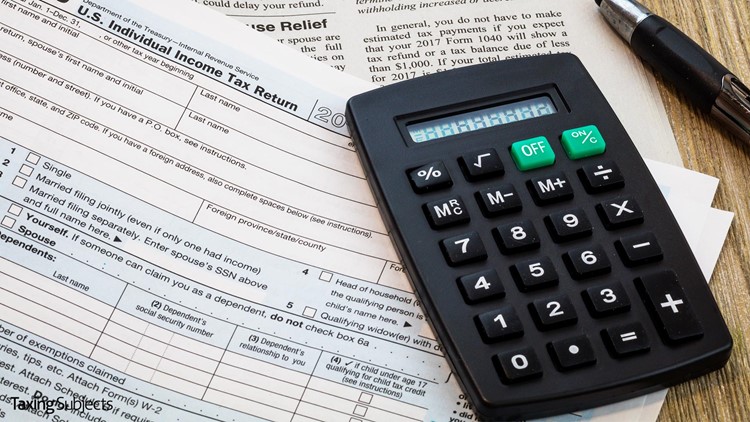IRSAC Supports Initiatives for Preparers

We recently reported on the Internal Revenue Service’s Advisory Council (IRSAC) report that stresses that inadequate funding is severely hampering the agency’s ability to serve individual taxpayers. But IRSAC’s 150-plus-page report is more than a plea for funding. It also contains support for initiatives that can have a direct impact on the nation’s tax preparers.
Here’s a brief look at some of the proposals with the biggest possible impacts:
Create Online Tax Professional Accounts
The IRS’ “Future State” proposal has gotten a lot of attention over the last few months. The plan to put taxpayer-controlled accounts online has generated lots of coverage and varying opinions. But Future State also contains a proposal to create a similar kind of account for tax preparers.
These Tax Professional Accounts would allow tax pros to log in and obtain access to their clients’ tax-related information—as well as to tools and services that can help them assist clients. Support among tax preparers for online accounts is already there, IRSAC says.
“The IRS conducted interviews with tax professionals to better understand today’s workflow in resolving issues with the IRS and identify opportunities for improving the system. Tax professionals overwhelmingly stated that having online access and client authorization to information would be extremely beneficial, and more important, allow them to provide the level of customer service that taxpayers expect,” their report states.
One of the areas damaged by the funding shortfall at the IRS has been customer service. Future State sees the Tax Professional Accounts as a vehicle to enlist tax pros in problem-solving for the individual taxpayer.
“Tax professionals routinely filter client questions, troubleshoot and resolve tax issues, and intervene on behalf of taxpayers—all without IRS contact,” the report suggests in its support for leveraging the tax pro into customer service.
The problem, says IRSAC, is that the concept is still more of a pipe dream than a plan. While the IRS offered a Future State demonstration website during the 2017 Tax Forums, the digital Tax Professional Account prototype is not functional, has no backend data structure and little detail on features or release dates.
One of the many hurdles is security. IRSAC says the IRS will have to make further improvements in security if they want to protect taxpayer data while allowing legitimate third-party access to the data by preparers. Taxpayers will need control of the information and actions the third party can carry out on their behalf, probably using Power of Attorney Form 2848. And taxpayers should be able to immediately revoke any third-party authorization. All these actions would be carried out online.
Some states have already established online accounts for tax professionals to serve their clients. California, Illinois, Massachusetts and Hawaii all have functioning sites and IRSAC says the IRS should take notice of what the states have already done.
Expand Use of W-2 Verification Codes
One of the key factors in avoiding tax related identity theft is timing. Taxpayers and preparers are urged to e-file their returns early in the tax season so their returns can be processed before scammers can do the same. But many fraudulent returns still get through because their W-2 data can’t be verified until later in the season.
So how to tell the legitimate return from the bogus ones?
The use of a 16-character verification code helps. Generated by the reporting agent when the W-2 is created, the code is based on taxpayer and employer data and an IRS-supplied algorithm using numbers and letters.
When entered onto the W-2 form of the tax return, the verification code helps to certify that the income data is legitimate. Returns that do not carry a verification code are still processed—but they are held for verification of the W-2 data and receive closer scrutiny. The codes are used only on e-filed returns.
But use of the codes is voluntary. IRSAC seeks to educate taxpayers and preparers about the value of using the codes when they are present on the employer’s W-2. The Advisory Council also recommends working with reporting agents and payroll software developers to expand the number of W-2s carrying the code.
Create “Lock/Unlock” Taxpayer Accounts
Another strategy to curtail Stolen Identity Refund Fraud (SIRF) is to allow taxpayers to lock their tax accounts when they are not about to e-file a return, thereby disqualifying a bogus return from fraudsters.
Here’s how the process could work: Once the taxpayer has created an account on the IRS website, their account can be “locked” blocking any return using the taxpayer’s Social Security Number. When the taxpayer is ready to e-file, they could log in, unlock the account, and file – locking the account once again afterward.
While it sounds simple, the IRSAC report admits there are procedural challenges to this approach on a number of questions that have yet to be ironed out:
- Coordination between the taxpayer and tax preparer
- Changes in filing status
- How to handle dependents
- Fraudulent returns and “robo-filing”
- Account setup
While the report supports further development of the Lock/Unlock strategy, it also stresses the concept should be thoroughly tested to see how it could be circumvented by fraudsters.
The entire IRSAC report is available on IRS.gov.



